The importance of dental health for your pets

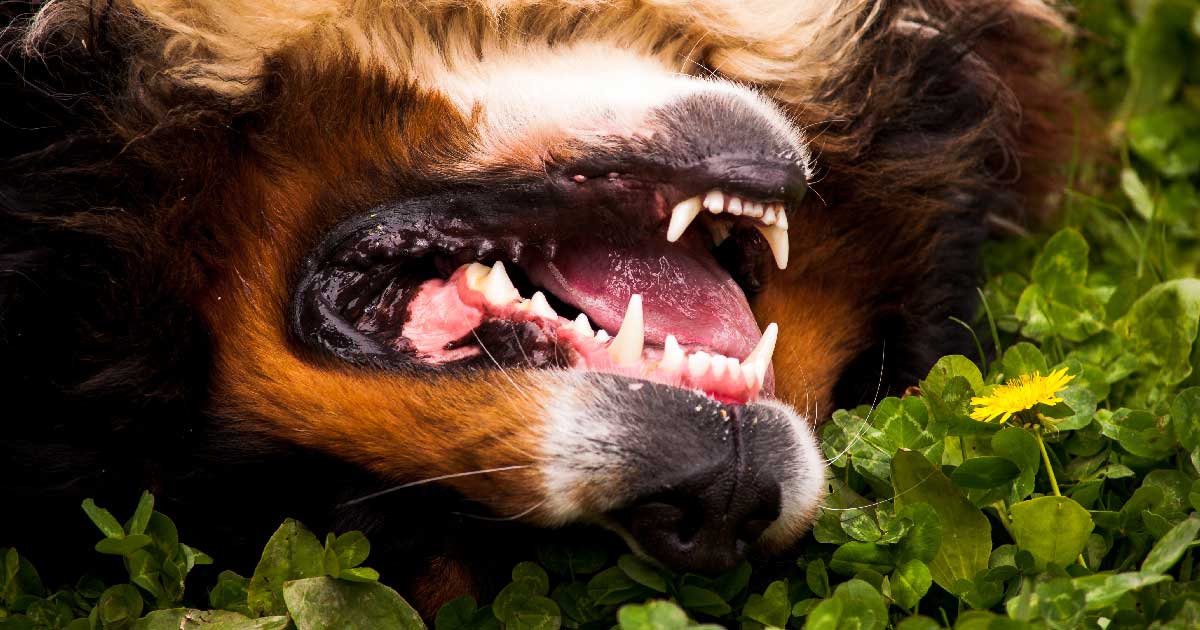
Your pet’s dental health is extremely important for their overall health; it’s important to care for and maintain your pet’s dental hygiene, to avoid detrimental effects on their body. This guide will explain common dental conditions seen in pets, as well as tips for keeping your pet’s teeth and mouth clean and healthy.
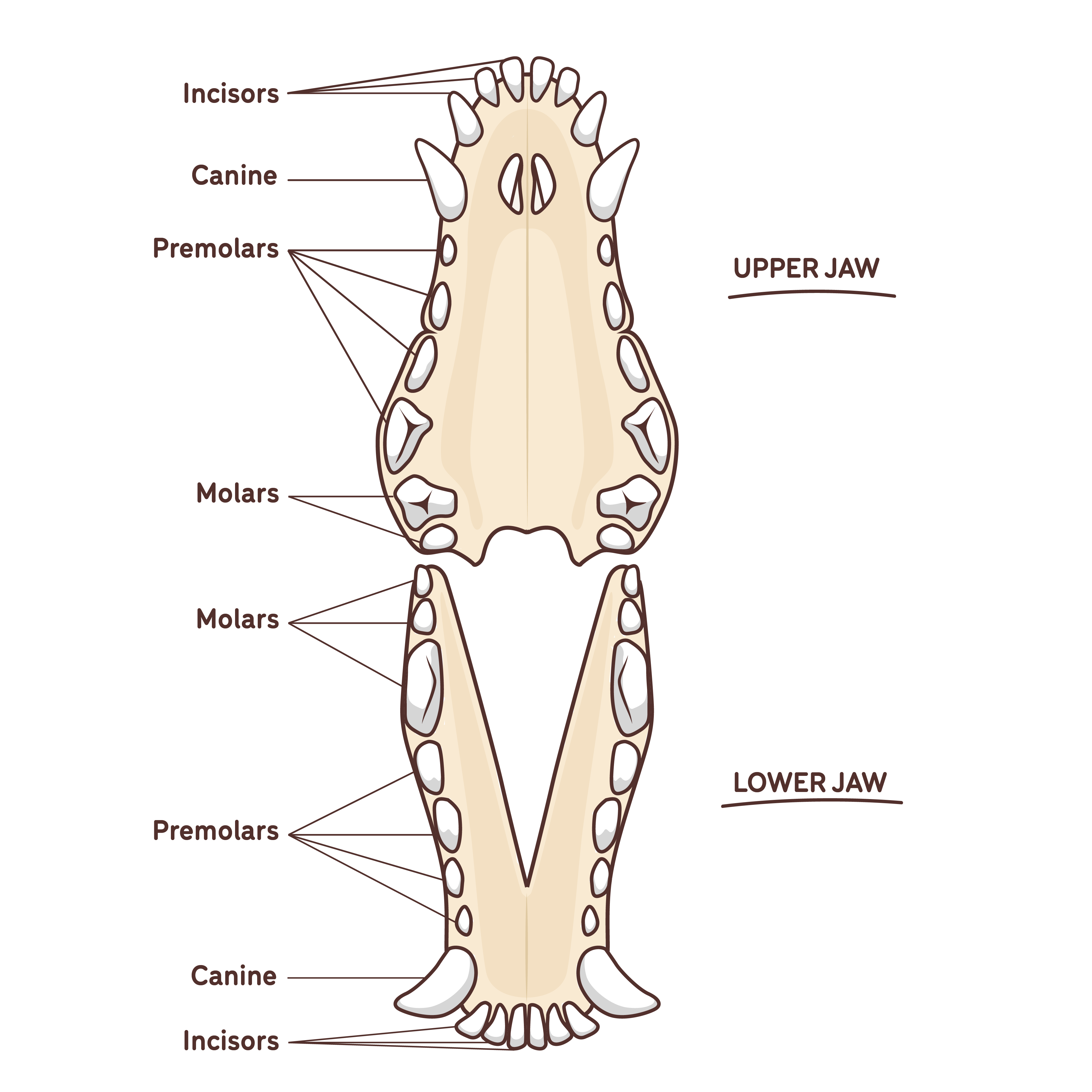
Common dental issues for pets
Plaque and Tartar (Calculus)
Plaque is a gummy substance that forms on the teeth within a few hours after a meal. Within 24 hours, plaque begins to harden by combining with salts that are present in the saliva. As the plaque continues to accumulate and mineralise, it transforms into tartar. Tartar, also called calculus, is rough and porous and can develop above and below the gum line (1,2).
Tartar forms a rough surface serving as a place for bacteria to grow and multiply in the mouth. As tartar builds up along the gum line, it pushes the gums away from the roots of the teeth. As the gums recede, they expose the enamel-free part of the tooth which causes sensitivity and pain (1,2).
Signs of plaque and tartar
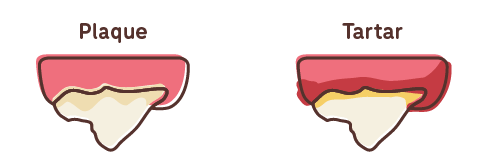
Plaque can be brushed away with a toothbrush but tartar cannot and will need to be removed by a professional, typically under general anesthesia.
Gingivitis and Dental Disease (Periodontal Disease)
Gingivitis is the first sign of dental disease and means “inflammation of the gums.” (1,3). Gingivitis may be reversed with thorough dental prophylaxis and consistent homecare (3,4).
Periodontitis is the later stage of the disease process and is defined as an inflammatory disease of the periodontium, which is the tissues that surround and support the teeth (5,6).
Dental disease is the most common health problem seen in dogs and cats, but the symptoms are often overlooked (7,8). By only two years of age, 80% of dogs and 70% of cats have some form of periodontal disease (1).
Studies have linked periodontal disease in pets to many systemic diseases of the kidneys and liver, heart disease, lung disease, diabetes complications, problems during pregnancy, and even cancer (9).
Holistic Veterinarian Karen Becker, states “these serious health concerns develop or are made worse by the constant presence of oral bacteria flushing into the bloodstream through inflamed or bleeding gum tissue. The good news is that many of these conditions improve once the dental disease is resolved and good oral hygiene is maintained.”
Veterinarian Michael Fox claims, “maintaining pets’ dental hygiene, along with good nutrition – where highly processed pet food ingredients, especially corn and soy glutens, leave micro-particles adhering to the teeth and foster dental disease – prevents much animal suffering. Dental problems, closely related to diet, are very common in dogs and cats and are often left untreated for too long, causing much suffering and long crippling, even fatal illness. These include kidney, liver and heart disease secondary to periodontal disease.”
Signs of Gingivitis and Periodontal Disease
If your pet is displaying any of the following signs and symptoms, it is recommended to get your Veterinarian to perform a dental check.
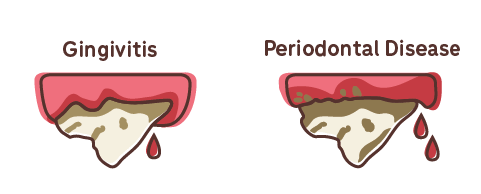
How to detect oral pain in pets
Depending on the level of pain, oral pain may appear in a few different ways. You can detect signs of oral pain at home by observing the following:
• Chewing slower than usual
• Loss of appetite
• Decreased activity levels
• Excessive drooling
• Whimpering
• Resistance to having the mouth touched
• Pawing at the mouth
Tips for Keeping Your Pet's Mouth Clean and Healthy
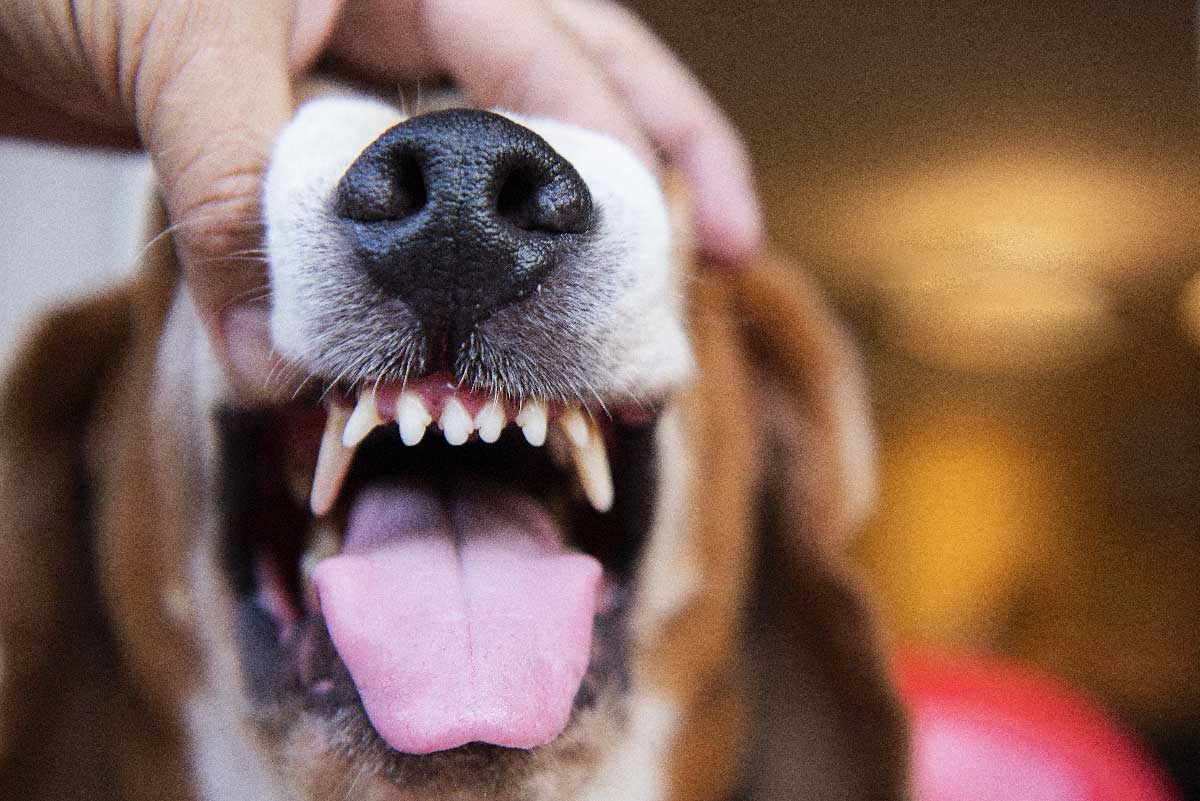
• Perform regular dental checks at home and schedule regular dental checks with your vet.
• Feed your pet a complete and balanced, species-appropriate raw diet. Browse our range of healthy raw diets here.
• Raw meaty bone - The act of chewing / grinding on bones is also why they’re often referred to as ‘nature’s toothbrush’. Feeding raw bones can help with the removal of plaque buildup which is essential when trying to prevent plaque from building up. Always give bones under supervision. Read more about choosing the right bone for your dog here.
• Daily teeth brushing - Plaque constantly grows with bacteria on your pet’s teeth, so daily teeth brushing may keep this bacteria under control. Plaque can be brushed away, tartar cannot. For a quick and easy toothpaste, check out this homemade recipe.
• Probiotics - Probiotics help create a healthy bacterial environment in your pet’s mouth and gut. Try our Big Dog Probiotic blend.
• Bone Broth – Bone broth is full of beneficial minerals that help keep the teeth and gums strong. Check out this Bone Broth Recipe.
Dental health and nutrition
Nutrition is the foundation of your pet’s overall health and the health of your pet’s teeth and gums come mainly from a species appropriate diet. Dogs and cats fed a natural diet including muscle meat and raw meaty bones typically have overall healthier mouths. A raw diet provides the right environment for a healthy oral microbiome, as natural live enzymes help prevent tartar build-up.
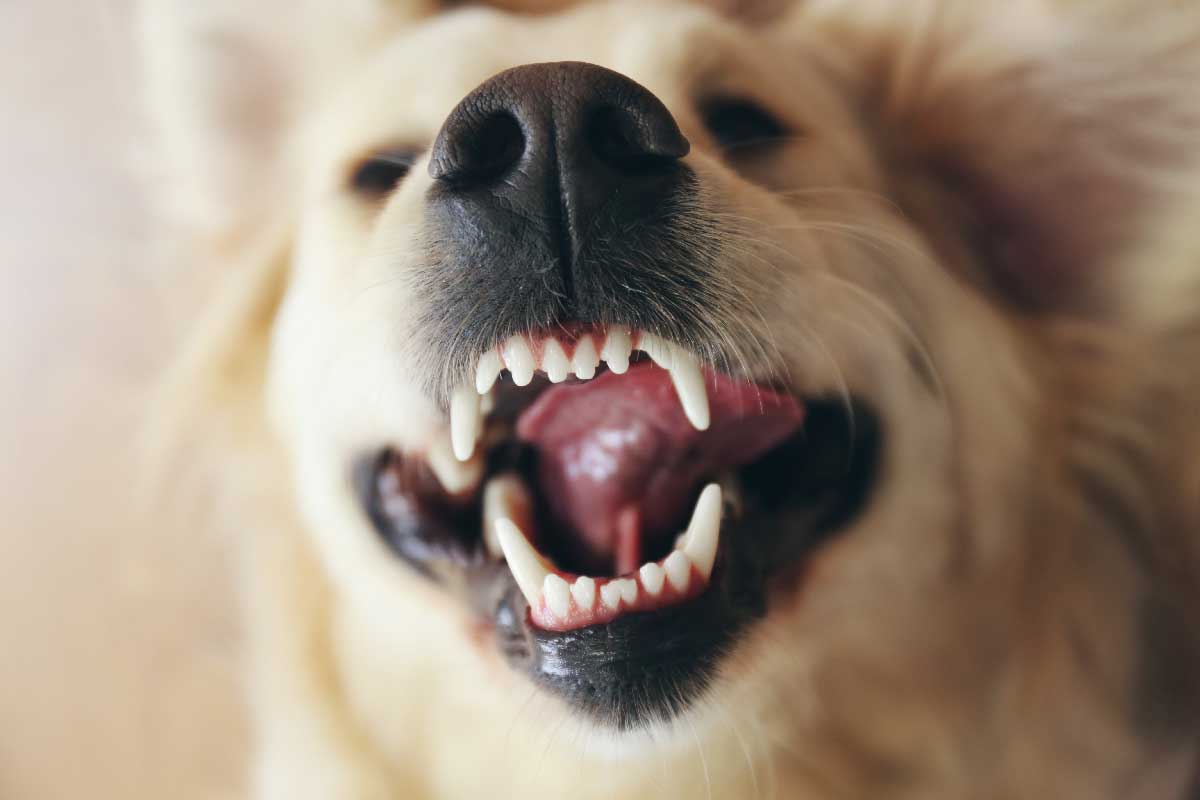
Veterinarian Tom Lonsdale has seen substantial changes in the dental health of his patients by changing their diet from kibble to a raw diet. Dr. Lonsdale conducted a 17-day trial where he took four fully raw fed dogs and put them on a kibble only diet. Each dog, while on a raw diet, started off with pearly white teeth but after the experiment had stinky breath, yellow teeth, and sore bleeding gums. You can view more of this experiment here.
Veterinarian Sara Chapman says, “Raw meaty bone diets keep wild carnivores’ teeth in top condition, and they can do the same for our domesticated carnivores. Even ground raw diets help prevent tartar build up, as the meat contains natural enzymes, and raw diets do not stick to the teeth, unlike diets that are high in starch.”
In conclusion, a good dental routine for your pet is important to not only prevent disease but to maintain general health and wellbeing.
References
1. Wiggs RB, Lobprise HB. Periodontology. Veterinary Dentistry, Principals and Practice. Philadelphia: Lippincott – Raven, 1997, pp 186-231.
2. Quirynen M, Teughels W, Kinder Haake S, Newman MG. Microbiology of periodontal diseases. Carranza’s Clinical Periodontology. St. Louis: WB Saunders, 2006, pp 134-169
3. Merin RL. Results of periodontal treatment. Carranza’s Clinical Periodontology. St. Louis: WB Saunders, 2006, pp 1206-1214
4. Grove TK. Periodontal disease. Compend Cont Ed Pract Vet 1982; 4(7):564.
5. Debowes LJ. Problems with the gingiva. In Niemiec BA (ed): Small Animal Dental, Oral and Maxillofacial Disease: A Colour Handbook. London: Manson, 2010, pp 159-181.
6. Novak MJ. Classification of diseases and conditions affecting the periodontium. Carranza’s Clinical Periodontology. St. Louis: WB Saunders, 2006, pp 100-109.
7. University of Minnesota Center for Companion Animal Health. National Companion Animal Study, 1996, p 3.
8. Lund EM, Armstrong PJ, Kirk CA, et al. Health status and population characteristics of dogs and cats examined at private veterinary practices in the United States. JAVMA 1999; 214:1336-1341.
9. Systemic Diseases Caused by Oral Infection - https://www.ncbi.nlm.nih.gov/pmc/articles/PMC88948/
10. Why You Should Skip Dental Cleaning Without Anesthesia https://healthypets.mercola.com/sites/healthypets/archive/2018/09/23/dental-disease-in-pets.aspx
11. The Disturbing Cause Of Dental Disease In Dogs https://www.dogsnaturallymagazine.com/the-disturbing-cuase-of-dental-disease-in-dogs/
12. Dental pain in dogs https://vcahospitals.com/know-your-pet/dental-pain-in-dogs
